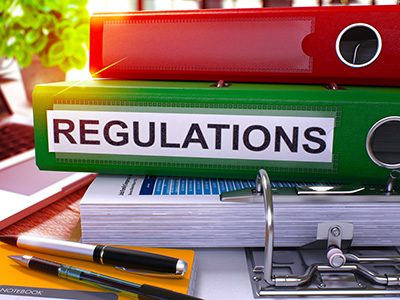
On April 13, 2016, the SEC published a concept release discussing and seeking public comment on modernizing certain business and financial disclosures required by Regulation S-K, which lays out reporting requirements for various public company SEC filings. The release focuses on whether the disclosure requirements – many of which have seen little change in decades – continue to elicit the information that investors need for investment and voting decisions, and whether any of the relevant rules have become outdated or unnecessary. It also seeks input on how registrants can most effectively present material information, including how the Commission can assist with improving the readability and navigability of SEC filings. As SEC Chair Mary Jo White explained in an April 13, 2016 statement regarding the release, “[w]e want to make sure that [the Commission’s disclosure] rules are facilitating both timely, material disclosure by companies and shareholders’ access to that information. And we want to make sure that our requirements are as efficient as they can be.”
The release was issued as part of the SEC’s Disclosure Effectiveness Initiative, a broad-based review of the requirements, presentation, and delivery of company disclosures, which began in 2013 with a staff report to Congress on how SEC disclosure and filing requirements could be updated and modernized. The Regulation S-K Concept Release was preceded by the publication of a September 2015 Request for Comment on certain aspects of Regulation S-X, specifically as it applies to the form and content of financial statements contained in SEC filings for entities other than a registrant. The SEC’s efforts under the Initiative are expected to expand to include a review of executive compensation and corporate governance information required in proxy statements. As Chair White explained, “[t]he staff is proceeding systematically through the disclosure regime.”
Close to 350 pages in length, the release begins with a discussion of the regulatory history of the disclosure requirements and Regulation S-K, and provides an overview of prior initiatives to modernize the requirements. The release goes on to present the framework for the current disclosure regime and explores potential alternative approaches. For example, the SEC explores the value of sunset provisions as a mechanism by which disclosure requirements could be revised to adapt to future market changes.
The release proceeds to review the business and financial disclosure requirements that apply to periodic reports, including a discussion of topics such as company performance, financial information, and future prospects; risk and risk management; and the frequency of interim reporting. The release concludes with a discussion of how registrants can most effectively deliver and present disclosure information to improve its usefulness to investors. It explores a range of topics, including cross-referencing, hyperlinks, incorporation by reference, and the use of company websites.
Laid out in the form of 340 numbered questions to which the SEC seeks responses, the primary topics on which the SEC solicits feedback include whether specific disclosures are important or useful to investors, the costs of providing particular disclosures, how information provided to investors can be enhanced while also promoting efficiency, and how technology can be leveraged to lower costs.
So what does the release signal about the future of corporate disclosures? While only time will tell, we can expect that the SEC’s future rulemaking will heavily reflect the public feedback it receives in response to the release, which is expected to elicit comments from investors, advocacy groups, companies, law firms, and industry associations alike. And, while it is unlikely that the SEC will ultimately revise all of the disclosure-related rules addressed in the release, even changes to some of these rules may result in a significant modification to the current disclosure regime. In the words of Chair White in discussing the release, the public should “stay tuned” as the SEC continues to develop recommendations to update and enhance the range of its disclosure requirements.

